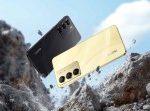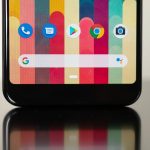- The best smartphones have never been more powerful or more attractive looking.
- We’ve researched and tested dozens of smartphones to bring you the best ones you can buy.
- Among the current iPhone models, the iPhone 12 is our top pick, while the iPhone 12 Pro, Samsung Galaxy S20 FE and S20 Ultra, and iPhone SE, are great options in their respective price ranges.
You can’t go wrong with any of the major flagship smartphones that have been released in 2019 and 2020. You can even get excellent phones for $500 or less these days.
In this guide, we’ve selected the absolute best smartphones at every price point, including top-tier phones, flagship killers, and affordable phones that work as well as many mid-range phones. We also highlight things you should look for in your next smartphone.
Here are the best smartphones in 2020:
- Best iPhone: iPhone 12
- Best Android phone: Samsung Galaxy S20 FE
- The best ultra-premium iPhone: iPhone 12 Pro
- Best ultra-premium Android phone: Samsung Galaxy S20 Ultra
- Best budget phone:
Updated on 11/03/2020 by Antonio Villas-Boas: Added the Samsung Galaxy S20 FE as our top pick for the best Android smartphone. Replaced “Best high-end flagship” with “Best ultra-premium iPhone” and appointed the iPhone 12 Pro. Updated phones we considered.
Apple
The iPhone 12 is the best phone for anyone who wants an iPhone with its relatively affordable price tag, excellent cameras, and powerful processor.
Pros: Affordable price for an iPhone, fast A14 processor, sharp 6.1-inch OLED screen, long battery life, dual-camera setup, wireless charging with MagSafe support, 5G connectivity
Cons: It’s missing the OLED screen and the telephoto camera lens of the iPhone 11 Pro and Pro Max
If you don’t want to spend $1,000 or more for the top-tier iPhone 12 Pro or Pro Max, but you still want a great smartphone, the iPhone 12 is the one for you. It offers the exact same processing power as the flagship iPhone 12 Pro, but it costs $200 less. You can also get lots of great carrier deals on the iPhone 12 right now to drop the price even further.
To hit its sweet price points, the iPhone 12 sacrifices a third camera lens for zooming, and it’s made of aluminum instead of steel. Otherwise, it’s mostly the same iPhone as the pricier Pro models. It largely has the same features that make iPhones great in general, and it comes with full 5G connectivity, too.
The iPhone 11 is powered by the same Apple A14 Bionic processor as the Pro model and it offers more than enough processing power to compete with any other flagship smartphone in 2021. The screen is also OLED, just like the Pro models. It also has wireless charging and support for the new MagSafe wireless charging system. In terms of durability, the aluminum frame is plenty strong and it’s water and dust resistant like the Pro version. While we wouldn’t say the iPhone 12 is indestructible, a bend test by Unbox Therapy shows that you’ll have a very, very hard time damaging the phone.
On the back of the phone, you get a 12-megapixel camera with dual lenses: an ultra-wide and regular wide. In our tests so far, the cameras took excellent photos and we found that the new night mode makes pictures taken in low-light look much better than they have on previous iPhones, especially with low-light portrait mode shots.
The front-facing camera is also 12-megapixels and it can create the blurred bokeh effect on your selfies so you’re the focus instead of the background. For security, you can unlock the iPhone 11 with Face ID, Apple’s facial-recognition feature.
The entry-level 64GB of storage should be more than enough for most people, but if you want more, you can get 128 or 256GB of storage instead. It will cost you more money, though.
The iPhone 12 comes in lots of fun colors, including white, black, blue, greed, and red. It’s also water-resistant for 30 minutes in depths of up to 2 meters.
The best Android phone
Antonio Villas-Boas/Insider
The Galaxy S20 FE is in the same league as the iPhone 12: a premium flagship phone with the majority of features that pricier ultra-premium models offer for several hundreds less.
Pros: Premium design, triple-lens camera system, nice screen, 120Hz refresh rate, powerful Snapdragon 865 chip, great battery life, good price tag
Cons: Camera over-enhances photos, doesn’t come with faster charger
You can often find the Samsung Galaxy S20 FE for less than its $700 MSRP, too, which makes the Galaxy S20 FE hard to beat and difficult to overlook. Indeed, the Galaxy S20 FE runs on a the same Snapdragon 865 chip as the ultra-premium $1,000-plus Galaxy S20 series, a triple-lens camera system, a large 6.5-inch AMOLED display with a smooth 120Hz refresh rate that makes all the difference in making a phone feel ultra-powerful and fast when you’re using it. It also has a large 4,500mAh battery and great battery life, as well as IP68 water resistance, and 5G connectivity.
The major difference between the S20 FE and the ultra-premium S20 series is mostly in the cameras. You’re getting slightly pared down camera specs in the Galaxy S20 with a 12-megapixel standard wide lens, a 12-megapixel ultra-wide, and an 8-megapixel 3x optical zoom and up to 30x digital zoom. Meanwhile, the full-fat S20 series has a camera with higher megapixel counts and higher zoom. From our tests, you’d be hard pressed to tell much difference in quality between the S20 FE and the ultra-premium S20 series, and you won’t be missing out on much at all.
With all that in mind, the Galaxy S20 FE is incredibly easy to recommend for Android users, even over Samsung’s own ultra-premium offerings.
The best ultra-premium iPhone
Lisa Eadicicco/Business Insider
The iPhone 12 Pro almost represents the absolute peak of Apple’s smartphone game, likely to be replaced by the iPhone 12 Pro Max once it’s released and reviewed.
Pros: Excellent camera especially in low-light; Elegant new design that’s easier to hold; LiDAR enables portrait mode photos even in the dark; 5G will keep the iPhone 12 Pro relevant for years to come
Cons: Zoom isn’t as crisp as Samsung’s; Widely-deployed 5G networks aren’t much faster than 4G LTE; No fingerprint sensor; No always-on display
For an extra $200 over the standard iPhone 12, the iPhone 12 Pro offers a triple-lens camera system with a standard lens, an ultrawide lens, and a zoomed lens, all of at 12 megapixels. It also includes new camera features like Apple’s ProRAW for finer controls over camera settings, and LiDar for better portrait mode photos, especially in low light.
Apart from the cameras, the iPhone 12 Pro sets itself apart with a stainless steel construction, and that’s about it. Things like the new MagSafe wireless charging feature, 5G connectivity, and even the OLED screen is common among all models in the iPhone 12 series.
We’d still recommend most people get the standard iPhone 12, but if you’re looking for an extra edge in camera tech, the iPhone 12 Pro is the one for you.
The best ultra-premium Android phone
Antonio Villas-Boas/Business Insider
Samsung’s Galaxy S20 Ultra is a zero-compromise phone with every smartphone spec and feature turned up to 11, like a super-smooth giant 6.9-inch 120Hz screen, 5G connectivity, and 100x zoom.
Pros: Massive screen with super-smooth 120Hz refresh rate, powerful specs, comes with faster-than-average charger, reverse wireless charger, 5G connectivity, triple-camera system
Cons: Massive price tag, so much glass on a phone makes it easier to crack (use a case), 100x zoom is a gimmick
The Galaxy S20 Ultra is surely the result of Samsung asking itself what would happen if it made a smartphone with absolutely zero compromises and without consideration for how much it costs. Indeed, starting at $1,400, the Galaxy S20 Ultra is among the most expensive smartphones you can buy at the moment.
It comes with a super-smooth 120Hz screen that’s also among the largest you’ll find on any smartphone at 6.9 inches. It runs on the Qualcomm Snapdragon 865 along with a crazy 12GB of RAM memory, and it can connect to 5G networks.
It has excellent battery life, and it comes with a fast 25W charger. It also supports wireless charging, which isn’t so special these days — but it can wirelessly charge other devices when you place them on the S20 Ultra’ back.
It also sports a triple-camera system that includes a standard camera with a whopping 108 megapixels, an ultra-wide camera, and a zoomed lens that can achieve 10x zoom without sacrificing photo quality. The zoomed lens can go all the way to 100x, but it’s not worth anyone’s while to go that far, as the photo is too blurry to be of any use.
The best budget phone
The might be a pricey budget phone at $400, but what you get for the price is nigh unbeatable.
Pros: Low price, excellent camera, iOS, Apple ecosystem, fast processing power, Touch ID
Cons: Small screen size may not be for everyone, short battery life compared to larger phones
What Apple has done here is very simple. It’s taken a 2017 iPhone 8 and slapped the 2019 iPhone 11’s A13 mobile chip into it … and threw the iPhone XR camera system on top. The result is a $400 iPhone that runs iOS and apps as fast as a $700 iPhone. In fact, you could technically say the runs as fast as the $1,100 iPhone 11 Pro Max — they have the same mobile chip, after all.
Like the iPhone 8, the iPhone SE gets a single camera lens, so you won’t get the zoomed lenses that are common on modern high-end phones, nor do you get the ultra-wide cameras that have been trending recently. But, you’re still getting an iPhone camera, which is to say you’re going to get great photos.
The classic design that includes metal and glass can be considered premium, at least from a different time. Indeed, it might look a little dated, but it still looks and feels like a high-end smartphone.
Overall, the iPhone SE comes highly recommended for anyone who like smaller phones, those on a tighter budget, or anyone who “just wants an iPhone,” like older relatives or people who don’t really care that much about phones or tech.
What else we considered
Antonio Villas-Boas/Business Insider
We have tested dozens of new phones over the past year to come up with our top picks. There are many other great options that we haven’t included in our top four for a variety of reasons. Here’s what else we considered:
The OnePlus 8T didn’t quite make it in our list of top phones in this late 2020 round, which is a shocker for anyone following our top picks, as OnePlus phones often feature here. The OnePlus 8T would have been our top choice for Android phones if its camera was a little better. It’s not bad, per se, but it tends to process photos even more than the Galaxy S20 FE does, which makes it a second choice for capturing memories.
We also considered Google’s latest Pixel 5, and we recommend it for those who are looking for the best camera quality in any phone. With that said, the Pixel 5’s good-but-mid-range Snapdragon 765G processor and performance doesn’t pull its $700 weight, especially when other $700 phones come with higher specs. You can read the full Pixel 5 review here.
On the cheaper side of things, we strongly considered Google’s Pixel 4a for the most highly recommended budget phone. It has a great camera, smooth performance, and an OLED screen for a very reasonable price. The biggest reason why we picked the iPhone SE as our top budget pick instead is because of its super powerful processor for the same price compared to the mid-range chip in the Pixel 4a. You can read the Pixel 4a review here.
We look forward to testing the 2021 flagship phones as they launch
Antonio Villas-Boas/Business Insider
We’re nearing the end of 2020, and we’re no longer expecting any major smartphone announcements for the rest of the year.
2021 will bring a whole new set of smartphones we look forward to testing, with Samsung’s next Galaxy S installment expected to be announced some time in February 2021 when the company usually announces its flagship devices.
Don’t buy a folding phone — yet
Lisa Eadicicco/Business Insider
We strongly recommend that you do not buy a foldable smartphone yet. The first couple generations of any new buzzworthy tech product is bound to be chock full of problems, and folding phones are no different.
Are they awesome? Are they fascinating? Are they so weird that they’re cool? Yes, but they’re just not worth the $1,000+ Samsung and Motorola are charging for them.
There have been numerous reports of the folding screens breaking, creasing, and ceasing to function after just days, weeks, or months of use. The Galaxy Fold famously had to be recalled and re-released with new hardware features to protect the fragile screen.
My advice? Wait for the third or fourth generation of foldable phones. Wait for the tech to be ready, and be prepared to be amazed the first time you fold out a tiny phone and it becomes a tablet.
How to choose a smartphone
Antonio Villas-Boas/Business Insider
Buying a smartphone can be confusing, here are all the things you need to look for when you’re shopping for your next phone.
Your smartphone is the one piece of tech that you carry on your person nearly every hour of every day, so you should really love the phone you’re carrying. To ensure that you get the best smartphone for your needs and budget, we’ve broken it down by the specifications that you’ll see listed on carrier and company websites. You’ll also find
Processor and RAM
The processor and RAM (memory) are the two most important parts of any phone. They determine how smoothly it runs and works through intense tasks like gaming or multitasking.
Storage space
Storage is also incredibly important because the amount of storage you have determines how many photos, songs, videos, and apps you can have downloaded on your phone; a chunk of storage is also taken up by the operating system to handle behind-the-scenes processes, so keep in mind that you don’t have access to the full amount. Never buy a 16GB phone — you will run out of space and regret it. 32GB is okay for most people, but it’s rare to find in 2020. Most phones now offer 64GB of storage, which is typically enough for most people’s needs. If you take a lot of photos, have tons of songs or videos downloaded, or you’re an app junkie, you will want 128GB or 256GB of storage. Unfortunately, adding storage costs money.
Screen size
Phones come in several sizes now, though most are growing ever bigger. Your average smartphone has at least a 5-inch screen, and many have nearly 6-inch screens. Luckily, bezels are slimming down, so now, having a phone with a 5.8-inch screen like the iPhone 11 Pro means you’re holding a small-sized phone that’s easy to grasp and operate one-handed.
Battery life
Most smartphones can last through a busy day and a half, but some can endure two days of heavy use. The larger the phone, the more battery life it typically has.
Ports (or lack thereof)
Ever since Apple axed the 3.5mm headphone jack on the iPhone 7 and 7 Plus, most phone makers have been getting rid of the jack, too. That means you can’t plug your wired headphones in unless you use an adapter. If you end up with a phone that lacks the jack, we recommend you get a nice pair of wireless headphones.
Software
Apple provides updates to its iPhones for about four years after their release, if not longer, so theoretically, you can have your iPhone up to date for years before you should buy a new one. My colleague still uses an iPhone SE from 2016 and has had no issues with everyday usage. Always update your software to get important security patches and new features. You may experience slowdown on older devices, but iPhones typically hold up well.
Android phones are something else entirely. Unless you have a Google Pixel phone, you won’t get software updates all that quickly — if at all. Google also ceases updates after a time, but security patches continue longer.
Price
Consider your purchase as an investment. Your smartphone is more than a communication device — it is your camera, your computer, your photo album, your music player, and your gaming console, too. A good smartphone can last for years, but a cheap one with poor specs will be outdated more quickly, and you’ll end up spending more in the long run. That $1,000 price tag on the iPhone 11 Pro looks less scary unless you consider that it could last you for four years or more.
How to buy
You can get a smartphone from your carrier by paying full price or paying in monthly installments. You can also buy one at stores like Target, Best Buy, Amazon, or directly from the phone maker. We recommend you buy it unlocked so you can switch carriers any time you choose, but we understand that carrier deals are often too good to give up.
For iPhone owners, the Apple iPhone Upgrade Program lets you get a new iPhone every year so long as you’ve made 12 monthly payments on your current phone. It’s basically like renting your smartphone so you can upgrade all the time. Some carriers, like T-Mobile, offer a similar program.
Check out our other smartphone buying guides
Crystal Cox/Business Insider
The best cheap phones
Budget phones have never been this good or this affordable.
The best iPhone for every type of person and budget
The iPhone lineup is full of great devices — but which one should you buy? We break it down.
Powered by WPeMatico






